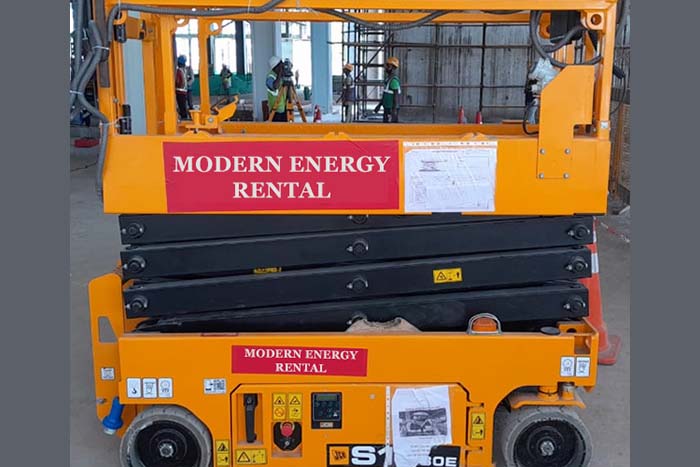
The Ultimate Guide to Renting Scissor Lifts: Everything You Need to Know
In the world of construction and maintenance, scissor lifts have become indispensable tools for accessing elevated work areas safely and efficiently. Whether you’re painting a ceiling, installing lighting fixtures, or performing routine maintenance tasks, renting a scissor lift can significantly enhance productivity while ensuring the safety of workers. In this comprehensive guide, we’ll cover everything you need to know about renting scissor lifts, from understanding the different types and features to navigating the rental process and prioritizing safety.
Understanding Scissor Lifts
Scissor lifts, also known as aerial work platforms, are hydraulic-powered platforms that can be raised vertically to provide access to elevated areas. They are commonly used in construction, warehousing, manufacturing, and maintenance industries. Scissor lifts come in various types, including electric, diesel, rough-terrain, and indoor models, each designed for specific applications
Types of Scissor Lifts
- Electric Scissor Lifts: Ideal for indoor use due to their zero emissions and quiet operation.
- Diesel Scissor Lifts: Suited for outdoor applications and rough terrains, offering higher lifting capacities.
- Rough-Terrain Scissor Lifts: Equipped with rugged tires and four-wheel drive for navigating uneven surfaces and outdoor environments.
- Indoor Scissor Lifts: Compact models designed for use in confined spaces and indoor environments with smooth flooring.
Features to Consider
When renting a scissor lift, several features should be considered to ensure the equipment meets your specific needs:
- Platform Height: Determine the maximum height required to reach your work area.
- Platform Capacity: Consider the weight of workers, tools, and materials that will be on the platform.
- Platform Size: Choose a platform size that accommodates the number of workers and allows for maneuverability.
- Power Source: Decide between electric, diesel, or dual-fuel options based on indoor or outdoor use and emission regulations.
- Mobility: Consider the terrain and maneuverability requirements, especially for outdoor and rough-terrain applications.
- Safety Features: Look for features such as guardrails, emergency lowering systems, and safety interlocks to ensure operator safety.
The Rental Process
- Determine Your Needs: Assess your project requirements, including height, capacity, and environment.
- Choose a Rental Company: Research reputable rental companies that offer a variety of scissor lift models and competitive pricing.
- Request a Quote: Contact the rental company to request a quote based on your specifications and rental duration.
- Schedule Delivery or Pickup: Coordinate the delivery or pickup of the scissor lift according to your project timeline.
- Receive Training: Ensure that operators receive proper training on the safe operation of the scissor lift.
- Perform Inspections: Conduct pre-rental inspections to check for any damage or malfunctions.
- Utilize the Equipment: Use the scissor lift according to the manufacturer’s guidelines and safety protocols.
- Return the Equipment: Schedule the return of the scissor lift once the rental period is complete.
Prioritizing Safety
Safety should always be a top priority when using scissor lifts. Follow these safety guidelines to prevent accidents and injuries:
- Perform Pre-Operation Inspections: Check for any damage or malfunctioning parts before each use.
- Wear Personal Protective Equipment (PPE): Operators should wear helmets, harnesses, and safety harnesses when working at height.
- Use Guardrails: Ensure that guardrails are properly installed and secured to prevent falls from the platform.
- Avoid Overloading: Never exceed the maximum weight capacity of the scissor lift.
- Follow Manufacturer Guidelines: Adhere to the manufacturer’s instructions and warnings for safe operation.
- Keep Clear of Obstacles: Avoid overhead obstructions, power lines, and other hazards while operating the scissor lift.
- Never Override Safety Features: Do not tamper with or override safety features such as limit switches and emergency lowering systems.
- Provide Adequate Training: Ensure that all operators receive thorough training on the safe operation of the scissor lift.

